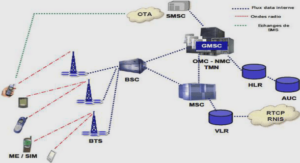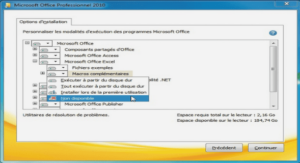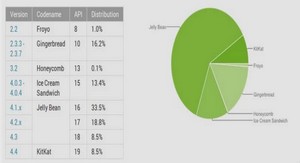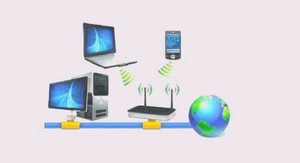CONTENTS
1. SCOPE
2. DOCUMENT STATUS
2.1 COPYRIGHT NOTICE
2.2 ERRATA
2.3 COMMENTS
3. REFERENCES
3.1 NORMATIVE REFERENCES
3.2 INFORMATIVE REFERENCES
4. DEFINITIONS AND ABBREVIATIONS
4.1 DEFINITIONS
4.2 ABBREVIATIONS
4.3 REQUIREMENTS
5. PROTOCOL OVERVIEW
5.1 PROTOCOL FEATURES
5.2 TRANSACTION CLASSES
5.2.1 Class 0: Unreliable invoke message with no result message
5.2.2 Class 1: Reliable invoke message with no result message
5.2.3 Class 2: Reliable invoke message with one reliable result message
5.3 RELATION TO OTHER PROTOCOLS
5.4 SECURITY CONSIDERATIONS
5.5 MANAGEMENT ENTITY
5.6 STATIC WTP CONFORMANCE CLAUSE
5.7 OTHER WTP USERS
6. ELEMENTS FOR LAYER-TO-LAYER COMMUNICATION
6.1 NOTATIONS USED
6.1.1 Definition of Service Primitives and Parameters
6.1.2 Primitives Types6.1.3 Service Parameter Tables
6.2 REQUIREMENTS ON THE UNDERLYING LAYER
6.3 SERVICES PROVIDED TO UPPER LAYER
6.3.1 TR-Invoke 6.3.2 TR-Result
6.3.3 TR-Abort
7. CLASSES OF OPERATION
7.1 CLASS 0 TRANSACTION
7.1.1 Motivation
7.1.2 Protocol Data Units
7.1.3 Procedure
7.2 CLASS 1 TRANSACTION
7.2.1 Motivation
7.2.2 Service Primitive Sequences
7.2.3 Protocol Data Units
7.2.4 Procedure
7.3 CLASS 2 TRANSACTION
7.3.1 Motivation
7.3.2 Service Primitive Sequences
7.3.3 Protocol Data Units
7.3.4 Procedure
8. PROTOCOL FEATURES
8.1 MESSAGE TRANSFER
8.1.1 Description
8.1.2 Service Primitives
8.1.3 Transport Protocol Data Units
8.1.4 Timer Intervals and Counters
8.1.5 Procedure
8.2 RE-TRANSMISSION UNTIL ACKNOWLEDGEMENT
8.2.1 Motivation
8.2.2 Transport Protocol Data Units
8.2.3 Timer Intervals and Counters
8.2.4 Procedure
8.3 USER ACKNOWLEDGEMENT
8.3.1 Motivation
8.3.2 Protocol Data Units
8.3.3 Procedure
8.4 INFORMATION IN LAST ACKNOWLEDGEMENT
8.4.1 Motivation
8.4.2 Service Primitives
8.4.3 Protocol Data Units
8.4.4 Procedure
8.5 CONCATENATION AND SEPARATION
8.5.1 Motivation
8.5.2 Procedure
8.6 ASYNCHRONOUS TRANSACTIONS
8.6.1 Motivation
8.7 TRANSACTION ABORT
8.7.1 Motivation
8.7.2 Transport Protocol Data Units
8.7.3 Service primitives
8.7.4 Procedure
8.8 TRANSACTION IDENTIFIER
8.8.1 Motivation
8.8.2 Procedure at the Responder
8.8.3 Procedure at the Initiator
8.9 TRANSACTION IDENTIFIER VERIFICATION
8.9.1 Motivation
8.9.2 Protocol Data Units
8.9.3 Procedure
8.10 TRANSPORT INFORMATION ITEMS (TPIS)
8.10.1 Motivation
8.10.2 Procedure
1.1 TRANSMISSION OF PARAMETERS
8.10.3 Motivation
8.10.4 Procedure
8.11 ERROR HANDLING
8.11.1 Motivation
8.11.2 Protocol Data Units
8.11.3 Procedure
8.12 VERSION HANDLING
8.12.1 Motivation
8.12.2 Protocol Data Units
8.12.3 Procedure
8.13 SEGMENTATION AND RE-ASSEMBLY (OPTIONAL)
8.13.1 Motivation
8.13.2 Procedure for Segmentation
8.13.3 Procedure for Packet Groups
8.13.4 Procedure for Selective Re-transmission
9. STRUCTURE AND ENCODING OF PROTOCOL DATA UNITS
9.1 GENERAL
9.2 COMMON HEADER FIELDS
9.2.1 Continue Flag, CON
9.2.2 Group Trailer (GTR) and Transmission Trailer (TTR) flag
9.2.3 Packet Sequence Number
9.2.4 PDU Type
9.2.5 Reserved, RES
9.2.6 Re-transmission Indicator, RID
9.2.7 Transaction Identifier, TID
9.3 FIXED HEADER STRUCTURE
9.3.1 Invoke PDU
9.3.2 Result PDU
9.3.3 Acknowledgement PDU
9.3.4 Abort PDU
9.3.5 Segmented Invoke PDU (Optional)
9.3.6 Segmented Result PDU (Optional)
9.3.7 Negative Acknowledgement PDU (Optional)
9.4 TRANSPORT INFORMATION ITEMS
9.4.1 General
9.4.2 Error TPI
9.4.3 Info TPI
9.4.4 Option TPI
9.4.5 Packet Sequence Number TPI (Optional)
9.5 STRUCTURE OF CONCATENATED PDUS
10. STATE TABLES
10.1 GENERAL 10.2 EVENT PROCESSING
10.3 ACTIONS
10.3.1 Timers
10.3.2 Counters
10.3.3 Messages
10.4 TIMERS, COUNTERS AND VARIABLES
10.4.1 Timers
10.4.2 Counters
10.4.3 Variables
10.5 WTP INITIATOR
10.6 WTP RESPONDER
11. EXAMPLES OF PROTOCOL OPERATION
11.1 INTRODUCTION
11.2 CLASS 0 TRANSACTION
11.2.1 Basic Transaction
11.3 CLASS 1 TRANSACTION
11.3.1 Basic Transaction
11.4 CLASS 2 TRANSACTION
11.4.1 Basic Transactio
n11.4.2 Transaction with “hold on” Acknowledgement
11.5 TRANSACTION IDENTIFIER VERIFICATION
11.5.1 Verification Succeeds
11.5.2 Verification Fails
11.5.3 Transaction with Out-Of-Order Invoke
11.6 SEGMENTATION AND RE-ASSEMBLY
11.6.1 Selective Re-transmission
APPENDIX A. DEFAULT TIMER AND COUNTER VALUES
APPENDIX B. IMPLEMENTATION NOTE
APPENDIX C. HISTORY AND CONTACT INFORMATION
1. Scope
A transaction protocol is defined to provide the services necessary for interactive « browsing » (request/response) applications. During a browsing session, the client requests information from a server, which MAY be fixed or mobile,and the server responds with the information. The request/response duo is referred to as a « transaction » in this document.The objective of the protocol is to reliably deliver the transaction while balancing the amount of reliability required for the application with the cost of delivering the reliability.
WTP runs on top a datagram service and optionally a security service. WTP has been defined as a light weight transaction oriented protocol that is suitable for implementation in « thin » clients (mobile stations) and operates efficiently over wireless datagram networks. The benefits of using WTP include.
2. Document Status
This document is available online in the following formats:
• PDF format at http://www.wapforum.org/.
2.1 Copyright Notice
© Wireless Application Protocol Forum, Ltd, 1999. Terms and conditions of use are available from the Wireless Application Forum Ltd. Web site http://www.wapforum.org/docs/copyright.htm
2.2 Errata
Known problems associated with this document are published at http://www.wapforum.org/.
2.3 Comments
Comments regarding this document can be submitted to the WAP Forum in the manner published at http://www.wapforum.org/.
3. References
3.1 Normative References
[FLEX] FLEX™ Protocol Specification and FLEX™ Encoding and Decoding Requirements, Version G1.9,
Document Number 68P81139B01, March 16, 1998, Motorola.
[FLEXSuite] FLEX™ Suite of Application Protocols, Version 1.0, Document Number 6881139B10, October 29,1997, Motorola.
[GSM0260] ETSI European Digital Cellular Telecommunication Systems (phase 2+) : General Packet Radio Service (GPRS) – stage 1 (GSM 02.60)
[GSM0290] ETSI European Digital Cellular Telecommunication Systems (phase 2) : Unstructured Supplementary Service Data(USSD) – stage 1 (GSM 02.90)
[GSM0340] ETSI European Digital Cellular Telecommunication Systems (phase 2+) : Technical realisation of the Short Message Service (SMS) Point-to-Point (P) (GSM 03.40)
[GSM0360] ETSI European Digital Cellular Telecommunication Systems (phase 2+) : General Packet Radio Service (GPRS) – stage 2 (GSM 03.60)
[GSM0390] ETSI European Digital Cellular Telecommunication Systems (phase 2) : Unstructured Supplementary Service Data(USSD) – stage 2 (GSM 03.90)
[GSM0490] ETSI European Digital Cellular Telecommunication Systems (phase 2) : Unstructured Supplementary Service Data(USSD) – stage 3 (GSM 04.90)
[IS130] EIA/TIA IS-130
[IS135] EIA/TIA IS-135
[IS136] EIA/TIA IS-136
[IS176] EIA/TIA IS-176 – CDPD 1.1 specifications
[IS637] TIA/EIA/IS-637: Short Message Services for Wideband Spread Spectrum Cellular Systems
[ISO7498] ISO 7498 OSI Reference Model
[ISO8509] ISO TR 8509 Service conventions
[ReFLEX] ReFLEX25 Protocol Specification Document, Version 2.6, Document Number 68P81139B02-A,
March 16, 1998, Motorola.
[RFC2119] S. Bradner « Keywords for use in RFCs to Indicate Requirement Levels », RFC2119,
http://www.internic.net/rfc/rfc2119.txt
[TR45.3.6] General UDP Transport Teleservice (GUTS) ñ Stage III, TR45.3.6/97.12.15
[WAE] « Wireless Application Environment Specification », WAP Forum. URL: http://www.wapforum.org/
[WAPARCH] « Wireless Application Protocol Architecture Specification », WAP Forum. URL:
http://www.wapforum.org/
[WAPUD] « WAP and GSM USSD », WAP Forum. URL: http://www.wapforum.org/
[WDP] « Wireless Datagram Protocol Specification », WAP Forum. URL: http://www.wapforum.org/
[WSP] « Wireless Session Protocol Specification », WAP Forum. URL: http://www.wapforum.org/
3.2 Informative References
[RFC768] J. Postel « User Datagram Protocol », RFC768, August 1980, http://www.internic.net/rfc/rfc768.txt
[RFC791] J. Postel « IP: Internet Protocol », RFC791, http://www.internic.net/rfc/rfc791.txt
4. Definitions and abbreviations
4.1 Definitions
For the purpose of this document the following definitions apply.
Device Address
The unique network address assigned to a device and following the format defined by an international standard such as E.164 for MSISDN addresses, X.121 for X.25 addresses or RFC 791 for IPv4 addresses. An address uniquely identifies the sending and/or receiving device.
Initiator
The WTP provider initiating a transaction is referred to as the Initiator.
Mobile Device
Refers to a device, such as a phone, pager, or PDA, connected to the wireless network via a wireless link. While the term ‘mobile’ implies the device is frequently moving, it MAY also include fixed or stationary wireless devices (i.e.wireless modems on electric meters) connected to a wireless network.
Network Type
Network type refers to any network, which is classified by a common set of characteristics (i.e. air interface) and standards. Examples of network types include GSM, CDMA, IS-136, iDEN, FLEX, ReFLEX, and Mobitex. Each network type MAY contain multiple underlying bearer services.
Wireless transaction protocol specification (385 KO) (Cours PDF)




